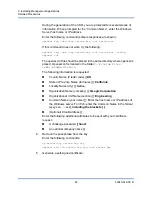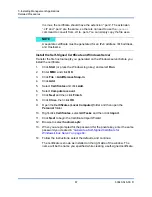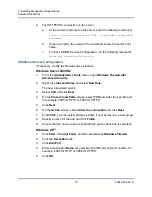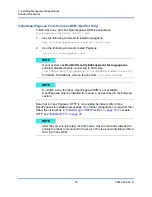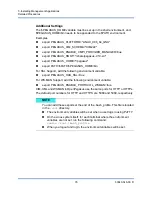
7–Installing Management Applications
Detailed Procedures
69
83840-546-00 D
For example, if the certificate is created with a host name, the host
name will appear.
d.
Double-click the certificate to open it.
e.
Click the
Details
tab.
f.
Scroll down and select the
Thumbprint
field.
g.
Select and copy the thumbprint in the
Details
window so you can
insert it in the next step.
h.
Return to the command prompt.
i.
Enter the following command:
winrm create winrm/config/Listener?Address=*+Transport=
HTTPS @{Hostname="<HostName or IPAddress>";
CertificateThumbprint="<paste from the previous step and
remove the spaces>"}
j.
The above command creates a listener on the HTTPS port (5986)
using any/all network address of the server, and my SelfSSL
generated certificate.
k.
You can use the
winrm
command to modify or set the HTTPS listener,
as WinRM listeners can be configured on any user defined port.
l.
From command prompt, run the following command to verify that the
listener(s) that have been configured:
winrm e winrm/config/listener
NOTE
If the certificate was generated using the host name, enter
the host name. If it was generated using the IP address, enter
the IP address. For an IPv6 address, use brackets [ ] around
the address.
If HTTPS is configured in your system, the listener must be
deleted before creating a new HTTPS listener. Use the
following command:
winrm delete
winrm/config/Listener?Address=*+Transport=HTT
PS
Summary of Contents for 8400 Series
Page 390: ......











